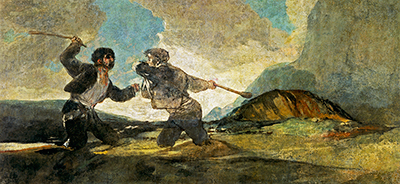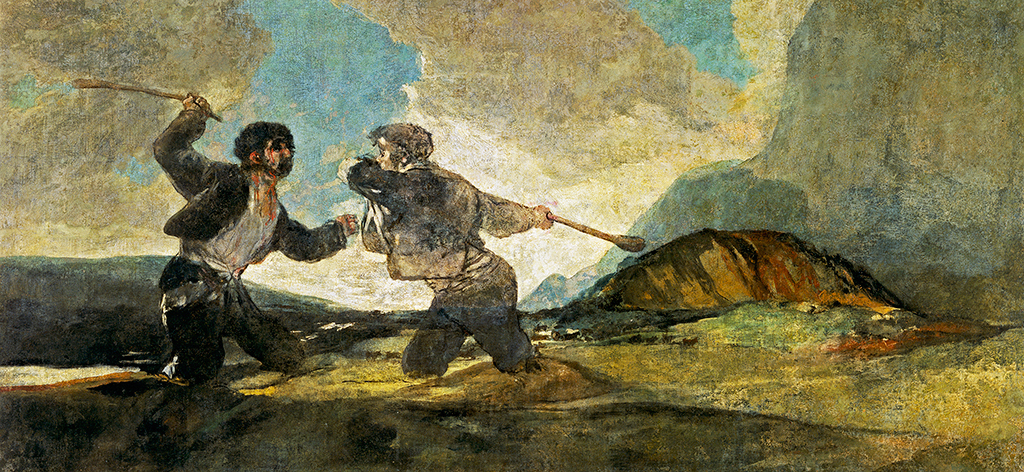Fight with Cudgels, referred to in inventories as The Cowherds or Strangers, is the title given to a portrait by Francisco Goya, a Spanish artist. This painting is currently located in the Museo Nacional del Prado, Madrid.
This is one of the black paintings series that Goya painted straight on his house's walls between 1820 and 1823. It shows two men using cudgels to fight each other, as they appear knee-deep in a swamp of sand or mud. Goya acquired a house in 1819 on the Manzanares slopes close to Madrid referred to Deaf Mans Villa (Quinta del Sordo). It was a tiny two-story building named after the former occupant who was deaf; however, Goya also became deaf after catching a fever in 1792. When Goya moved to Bordeaux, from 1819 to 1823, he made a 14 works series. He painted these works in oil directly on his home’s walls. The Fight with Cudgels took place in the upper room of the Quinta del Sordo.
The conventional interpretation is like a fight between two ordinary people fighting in a deserted place while knee-deep. Nigel Glendinning (the British researcher) had already commented on the dissimilarities between the last detail of the Black Painting and the detail recorded by Jean before they were transferred from the walls of Goya's house. In late 2010, another research of Laurent's images by painter and art history teacher Carlos Foradada reiterated that Goya showed the fighters standing in tall grass instead of knee-deep mud. The failure of the transfer meant much of the painting parts were lost, which was later hidden under the knees. This facilitated the interpretation of the buried legs.
As stated by Francisco-Xavier, Goya might have referred to a tale (number 75) that occurs in the work of Diego Saavedra Fajardo, the symbol book of Political Maxims (Empresas Políticas), Idea of a Christian political prince, which had lots of essays on the training of a prince. The tale referred to Cadmus’ and the dragon’s teeth Greek myth. By order of Athena, Cadmus disseminated dragon’s teeth on the land, which gave birth to a race of violent armed men, the sown (Spartoi). Cadmus left a stone under them and dropped them on top of each other until only five endured, helping him create the citadel (Cadmea) of Thebes. This imagery helped Saavedra to discuss the way some rulers foment conflict to bring peace to the kingdoms finally. Goya’s utilization of this allegory might have pertained to the politics and policies of Ferdinand VII.





